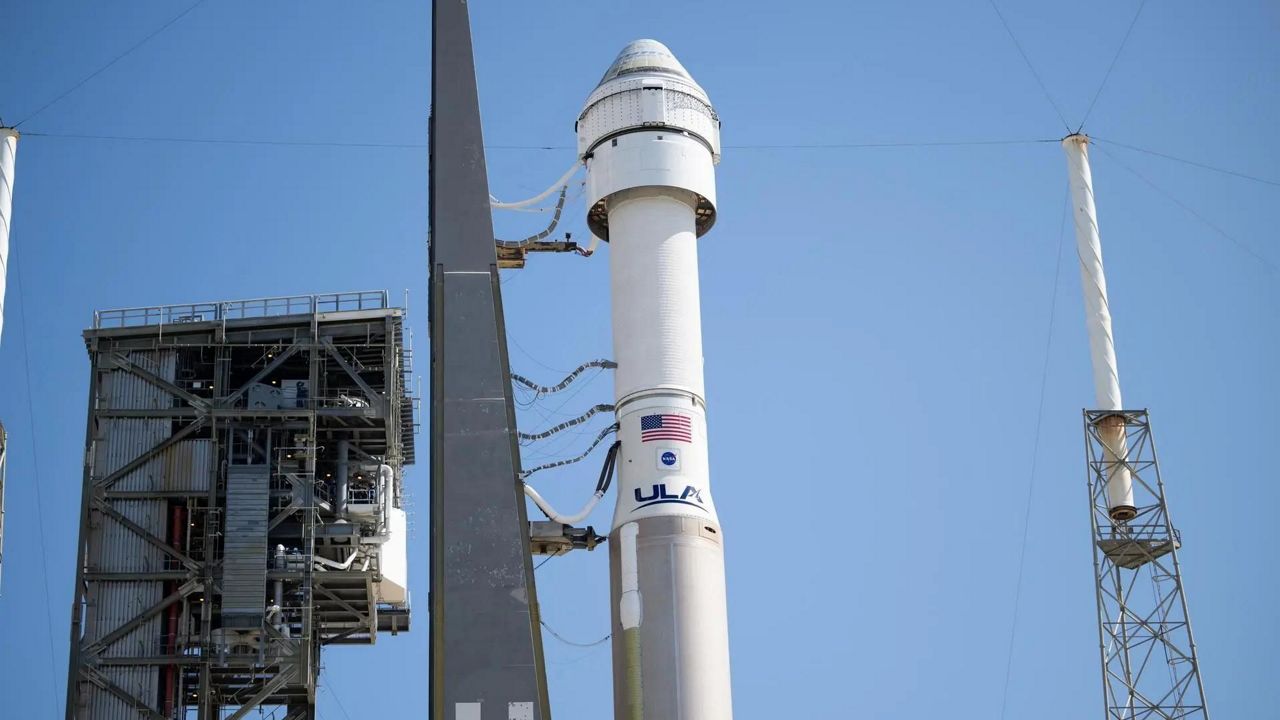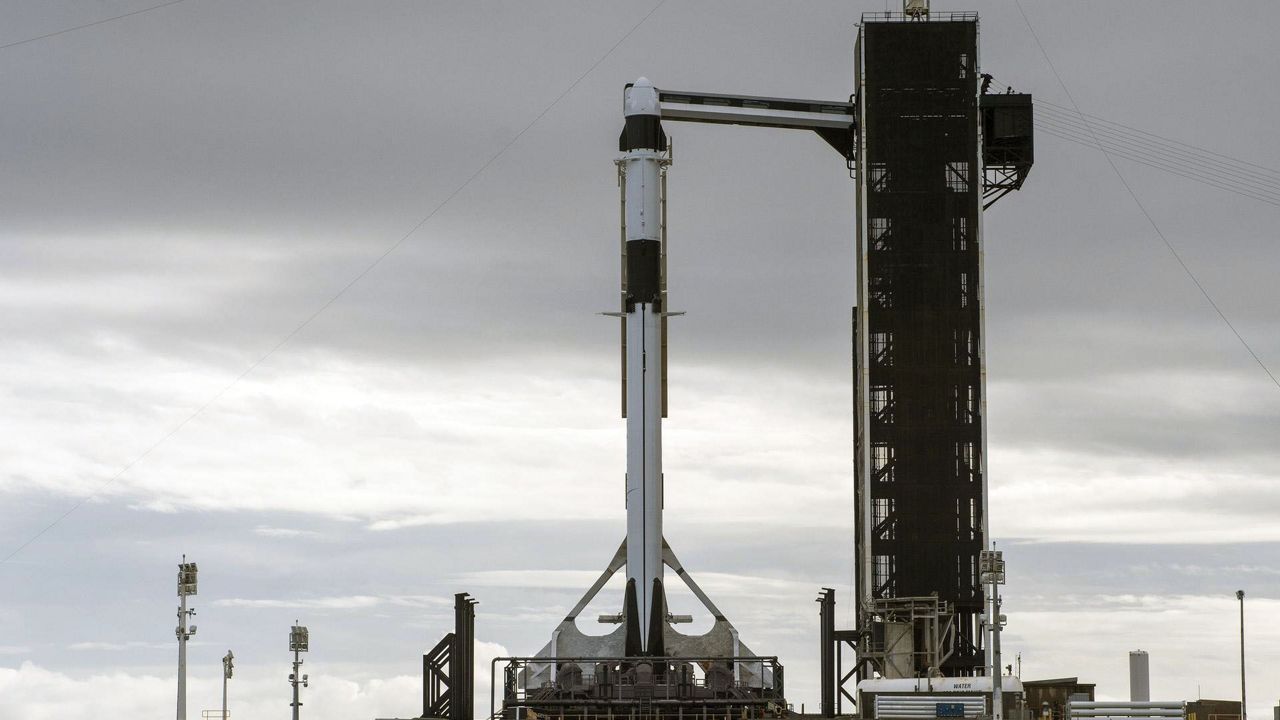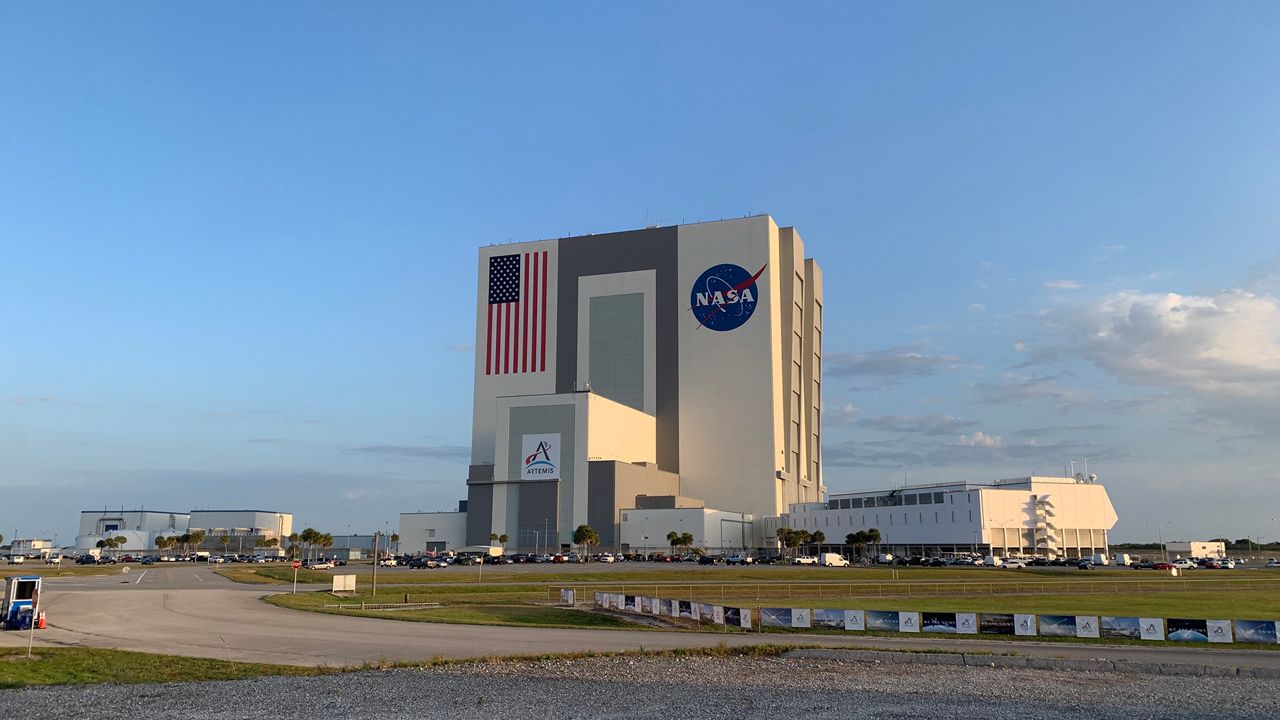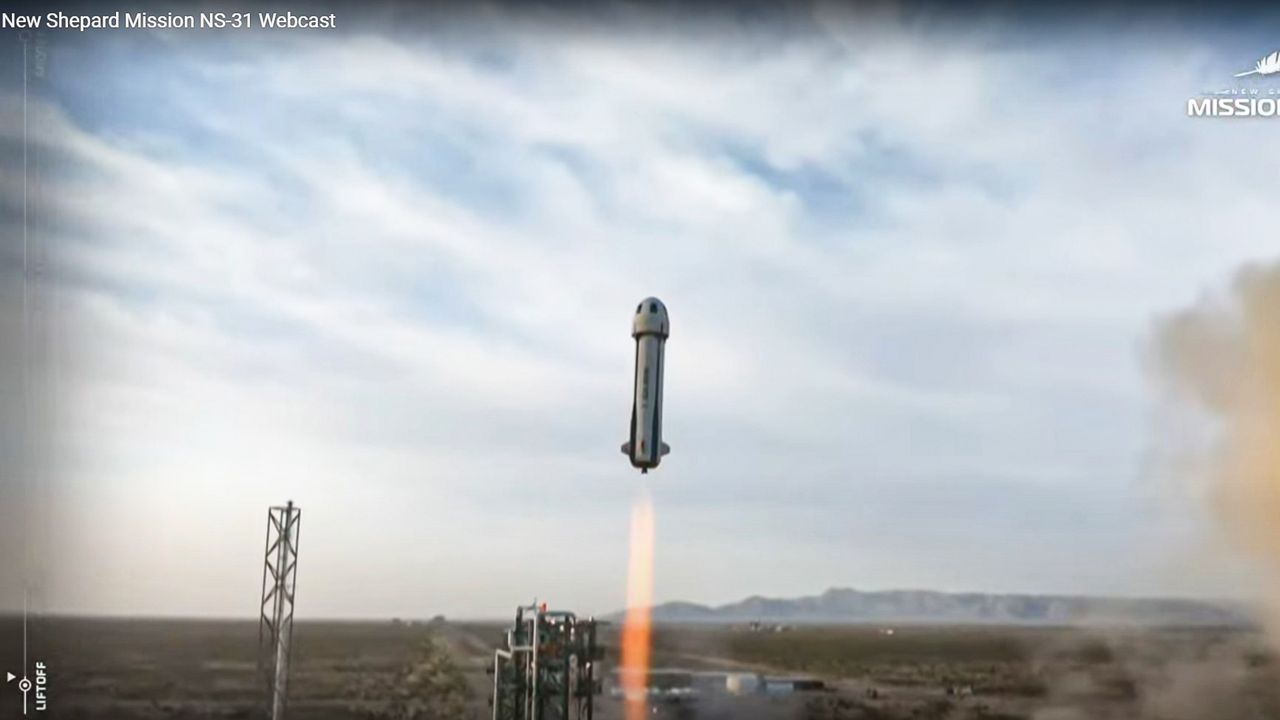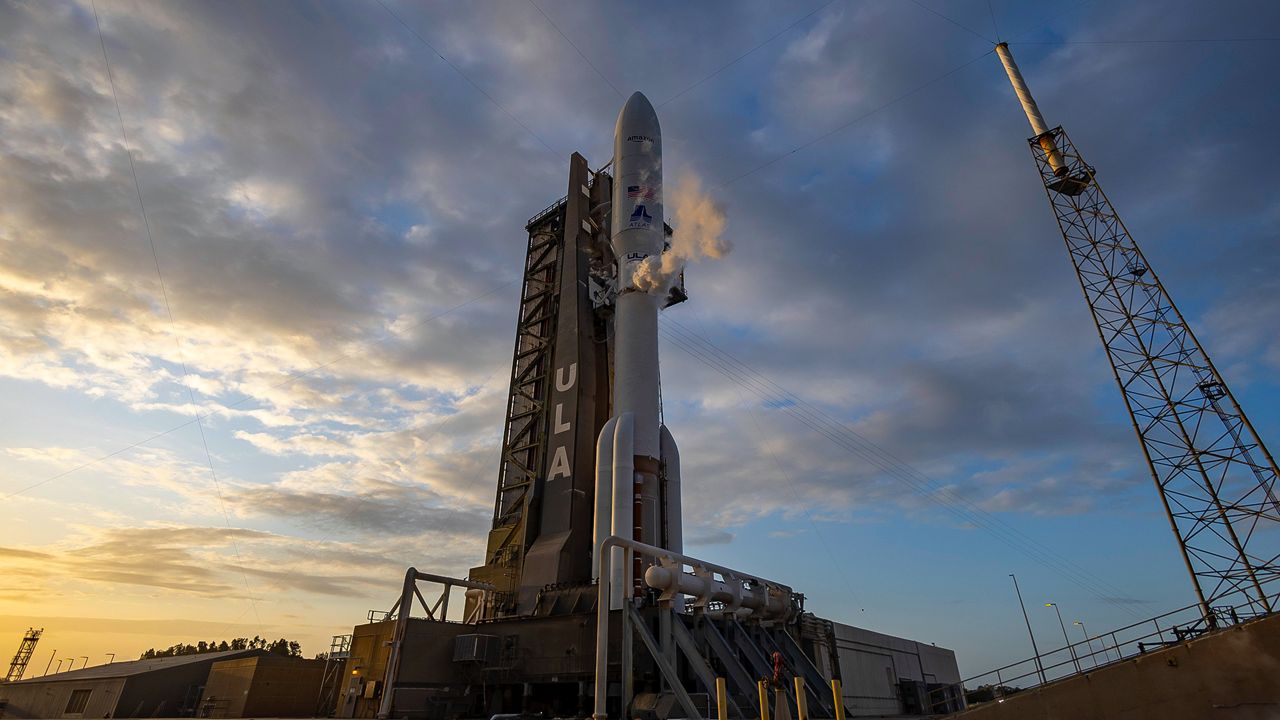CAPE CANAVERAL SPACE FORCE STATION — During a teleconference on the updates of the delayed-prone maiden crewed launch of Boeing's Starliner, NASA confirmed with Spectrum News that it will send up the spacecraft that has a small helium leak.
What You Need To Know
- The cause of the helium leak is a defective seal, NASA believes
- NASA tells Spectrum News that they feel confident to fly with leak
During a teleconference with the media on Friday morning, NASA and Boeing officials assured that the Starliner will launch NASA astronauts Cmdr. Barry “Butch” Wilmore and pilot Sunita “Suni” Williams to the International Space Station on Saturday, June 1, at 12:25 p.m. ET from Space Launch Complex-41 on Cape Canaveral Space Force Station in Florida.
The main issue that has caused so many launch delays is a helium leak traced to a flange on the ship’s single reaction control system thruster. It was found after it was in the Vertical Integration Facility at Space Launch Complex-41 for a repair to the United Launch Alliance Atlas V’s rocket for a pressure regulation valve issue.
NASA’s Commercial Crew Program Manager Steve Stich said during the teleconference that the Starliner’s helium system showed the leak in the flange — a flange is used to connect two or more pipes or valves and in this case, it is the size of a deck of cards.
He said the leak is stable, it is not growing, and it is believed it will not pose a risk during the launch or during orbit once it is docked to the International Space Station, nor on re-entry.
Because of the location of this flange, both Stich and Boeing’s Commercial Crew Program Vice President Mark Nappi revealed that it would be too dangerous for engineers to open the flange and replace a defected seal that is causing the helium leak. The process means engineers would have to remove the Starliner from the Atlas V rocket in order to get to the flange.
The seal itself is very similar to a rubber washer that can be found in a sink’s faucet and this particular one has a diameter of a shirt button and thin.
The Starliner’s service module has 28 reaction control system thrusters that help with the maneuverability of the craft. Stich and others said they feel confident that 27 out of the 28 are in working order and have no leak.
This means that officials say they are confident to fly the Starliner carrying the two astronauts, have the spacecraft dock with the ISS and then undock and return to Earth.
“I would say the reason we’re confident, two different aspects of confidence in flying with the leak. One, we characterized the leak through various pressure cycles and the leak relatively is stable,” answered Stich to a Spectrum News’ question.
He added that officials have done a couple of safety and endurance tests on another seal like the one in the flange and were able to manage a bigger leak than the one on the Starliner.
“We think it’s stable.… Also, on the other side of it, we looked at it, ‘What if it grows, can we manage it?’ And that’s what is giving us confidence to proceed into the flight,” Stich continued.
Stich said that officials will monitor the leak and manage it during the entire mission.
Both Wilmore and Williams are in quarantine in Houston and will fly back to Florida on Tuesday, May 28.
The pair are in good spirits. They have been listening to the meetings, working out and speaking with family. They have done additional simulations and failure cases, officials said.
NASA, Boeing, and United Launch Alliance will take part in a Delta-Agency Flight Test Readiness Review on Wednesday, May 29, to evaluate the work that has been done to both the Starliner and the Atlas V rocket.
Timeline of launch attempts
The Boeing Crew Flight Test mission has seen a number of delays, starting on the first launch attempt on Monday, May 6, when the 16.5-foot (5 meter) tall Starliner christen Calypso was sitting on top of United Launch Alliance’s Atlas V rocket as they were on the launch pad.
(Boeing built the Starliner and United Launch Alliance — a joint business venture between Boeing and Lockheed Martin — built the Atlas V rocket.)
Before it was set to leave the launch pad, officials called off the launch because they discovered an issue with a pressure regulation valve on a liquid oxygen tank on the Atlas V rocket’s Centaur upper stage.
Both Starliner and the rocket were rolled back to Vertical Integration Facility at Space Launch Complex-41 to repair the issue.
Boeing scheduled a second launch attempt for Friday, May 17, at 6:16 p.m. ET, but it was canceled after the small helium leak was detected in the Starliner’s service module.
“Pressure testing performed on May 15 on the spacecraft’s helium system showed the leak in the flange is stable and would not pose a risk at that level during the flight. The testing also indicated the rest of the thruster system is sealed effectively across the entire service module,” according to Boeing at the time.
There was hope that an attempted launch would take place on Tuesday, May 21, at 4:43 p.m. ET, but it was pushed back to Saturday, May 25, at 3:09 p.m. ET, so Boeing would have more time to assess the leak.
On Tuesday night, May 21, NASA issued a press release to say that the Saturday, May 25, attempt would be postponed. The following day, the U.S. space agency stated it would try for a launch on June 1.
A brief history of the Starliner
This Starliner spacecraft named Calypso had issues before. In December 2019, the launch went well for the first Orbital Flight Test but a glitch in the mission-elapsed timer caused it to go into an orbital insertion burn at the wrong time and used too much fuel.
This meant that while it was in a stable orbit, it could not meet up with the International Space Station.
In 2014, Boeing received $4.2 billion from NASA to send people to the International Space Station. In that same announcement, NASA gave SpaceX $2.6 billion.
"The contracts include at least one crewed flight test per company with at least one NASA astronaut aboard to verify the fully integrated rocket and spacecraft system can launch, maneuver in orbit, and dock to the space station, as well as validate all its systems perform as expected. Once each company’s test program has been completed successfully and its system achieves NASA certification, each contractor will conduct at least two, and as many as six, crewed missions to the space station. These spacecraft also will serve as a lifeboat for astronauts aboard the station," NASA stated at the time.




